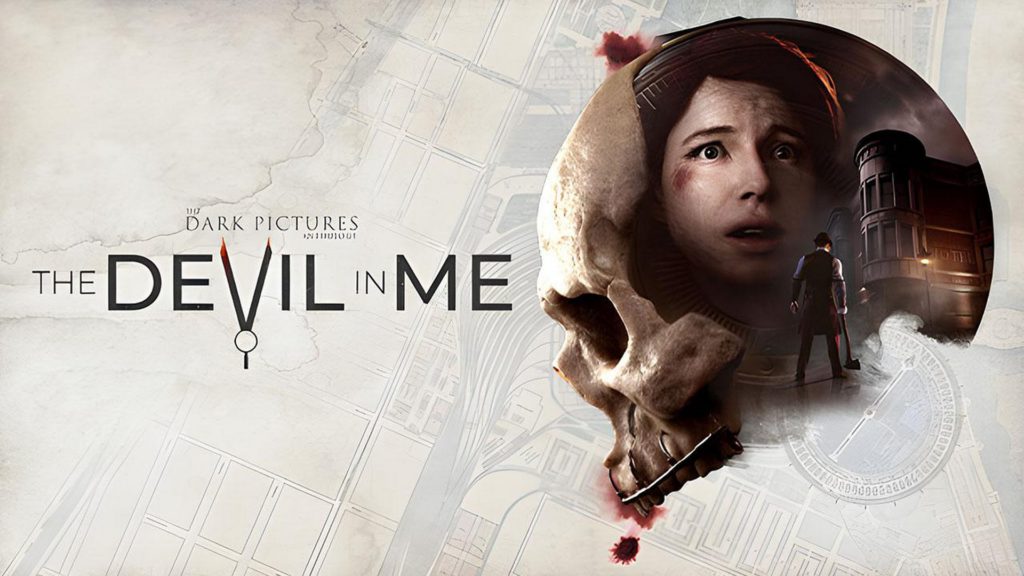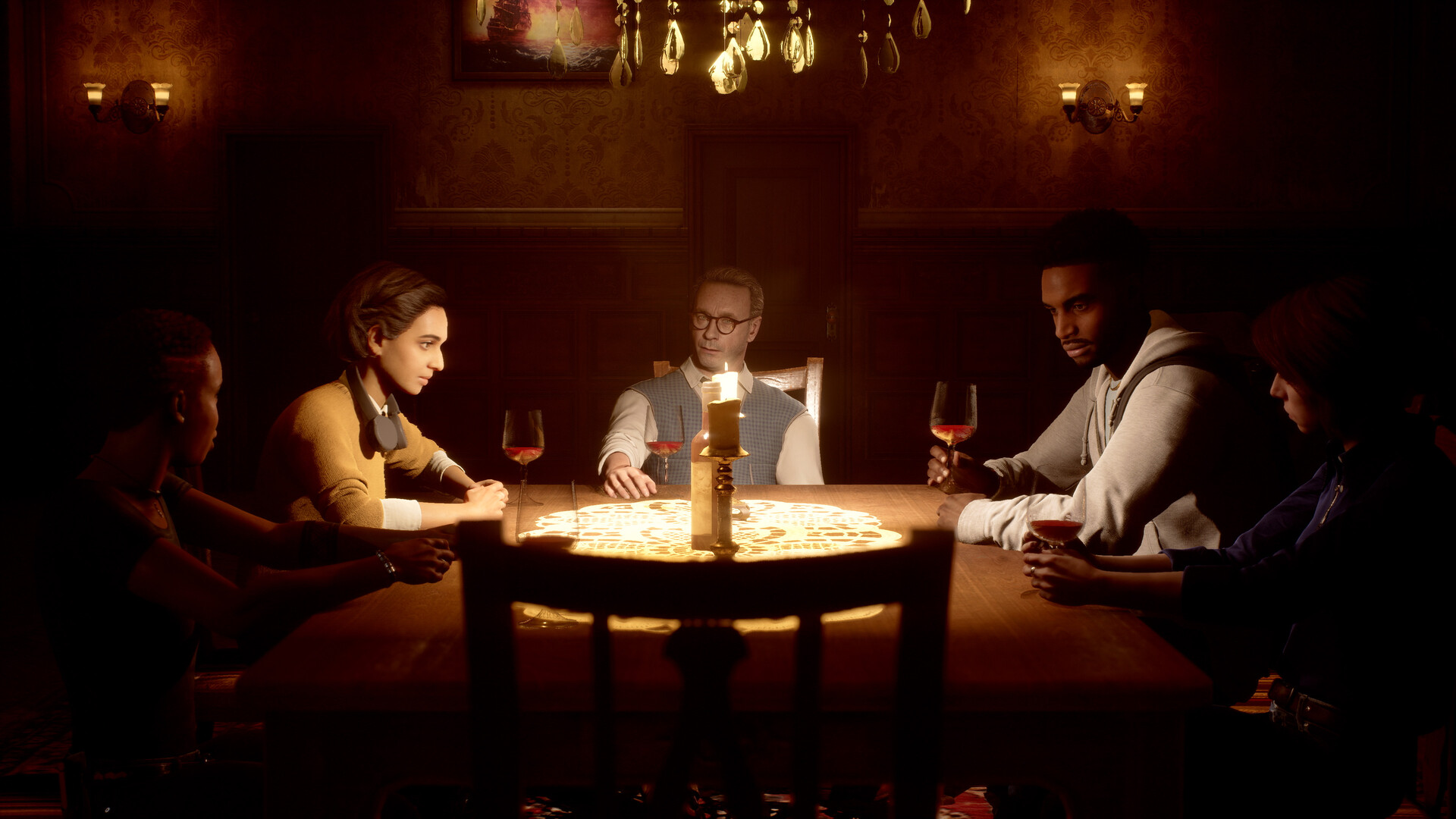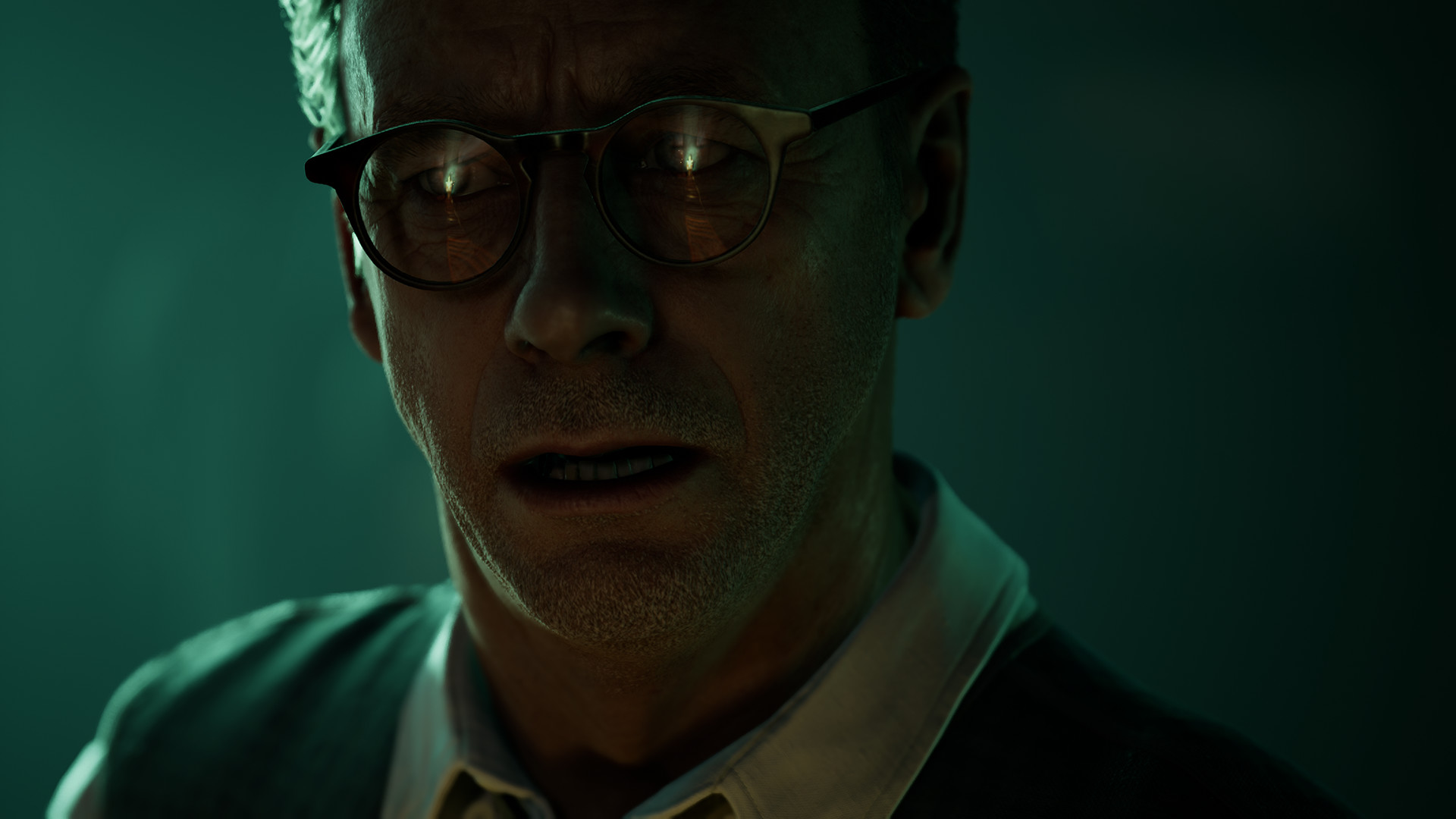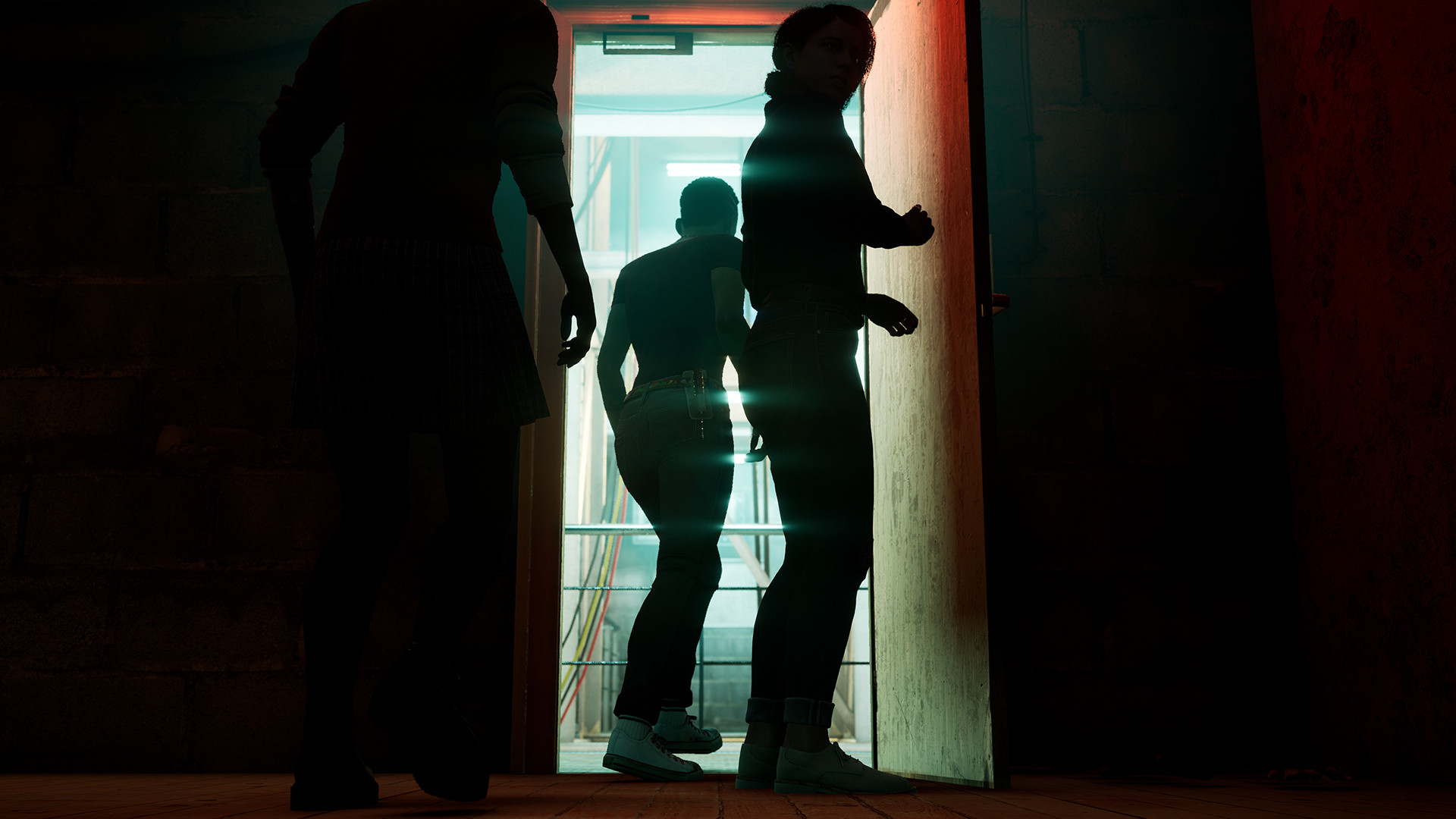
Supermassive games hit it big with their 2015 title ‘Until Dawn.’ Their attention to detail in their interactive horror drama helped this title to become an instant classic. This same love and passion they had for the multi-choice narrative-driven experience have extended into an ongoing series with Bandai Namco. The final entry of the first season for ‘The Dark Pictures Anthology’ sees ‘The Devil in Me’ bring a climactic finish to the collection of individual stories.
As mentioned earlier, the ongoing series of games are all told as individual stories save for one detail, The Curator. Once again, the ominous and omnipotent figure sets to captivate the players in a cryptic and coy manner. The Repository, a gloomy library that uses candles to combat the darkness from outside, is packed to the roof with books that are filled with the most horrid of stories of death and deception. It would always come as a relief in a way when players were whisked away from the ongoing story to have the Curator either commend our performances or condemn our shortcomings. The secrets of this secluded area are yet to be revealed in how they connect all the games, but it’s safe to say, I don’t think we will be waiting much longer.
The story that we are presented this time follows suit with previous entries that start out with the story in the past, or what the tale is based on. Following a young couple at the tail end of the 1800s, who were celebrating their recent nuptial by booking a holiday at the World Fair Hotel in Chicago, which was run by an exceptional host, H.H Holmes. Much like the original game in the anthology, the inspiration of the story is based on real-life events, and Herman Webster Mudgett, who acted under the alias of Dr. Henry Howard Holmes, was America’s first documented serial killer. His elaborate ruse of creating a literal “Murder Castle” of a hotel to draw in unsuspecting victims was brutally played out as the two innocent patrons of the hotel are divided from each other, only to be forced to watch each other suffocate and bleed out before their eyes.

A promising foundation and the modern-day cast directly tie into the infamous legend, through a TV show that covers the bleaker moments of history. The Lonnit Entertainment Group is invited out to the estate of Granthem Du’met and his monument to the dreaded murder castle, one that has supposedly been recreated in its entirety. Charlie, who is the director and leader of the group, eagerly accepts the invitation at the expense of his tiny crew, whose relationship with the director is already proving to be stretched paper thin. Kate, the on-screen host, Mark, the cameraman, Jamie, the lighting technician, and the new intern, Erin, to work the sound equipment, could easily walk but have agreed to make one last ditch effort to finish the project.
In terms of group dynamic, the spread of personalities, backgrounds, and skillsets they bring are arguably the most well-rounded of the anthology so far. The strained relationship of the group with most already having one foot out the door, however, did create a few initial struggles in trying to connect with them just based on their initial presentation. The added pressure of wanting to survive the night did create an adrenaline boost, which served to form a connection through crisis mentality, and that helped hasten my connection with some. The voice acting and dialogue have seen a noticeable step forward for the series though, as there was less downtime between delivery and longer conversations in general. The downtime had more situations that were filled with casual back-and-forth banter. The drawback was, I felt, that the amount of dialogue choices were rolled back to accommodate, meaning the players were interacting with the conversations less often.
Given that this is an interactive story at its core that can be played solo, online with two people, or with a group of up to five people passing the controller, I would have welcomed a more interactive dialogue system as the three options available could be weighted too hard in either direction, or the ‘say nothing’ option was often a bad decision rather than a neutral outcome. Don’t misquote me either, as this is still a heavily dialogue-driven narrative with important choices to be found in almost every interaction. The conversations being streamlined for a longer vocal delivery just made the player decision portion feel smaller in comparison.

The exploration of the Murder Castle replica and the dilapidated surrounding buildings was particularly gripping the further into the night the story progressed. Starting out in the day, the sunshine had the isolated island draped in a bath of golden rays, and a lingering subtle soundtrack gave a beautiful sadness to the old structures. During the night, the 1800s-inspired walls of the hotel became a labyrinth of anxiety as the rooms were drowning in obscurity, with nothing but a faint lighter glow or torch light breaking through the darkness.
The ingenuity of the elaborate use of animatronic mannequins paired with screeching and an abrupt musical score around the hotel constantly turned my mind against me, and their silhouettes would shift or fall and jump out at me as I swung my light source around trying to find the real killer that would silently stalk the halls. The constant uncertainty and terrifying traps or distressing rooms made the cat-and-mouse effect work wonders for players trying to figure out their next move. With torture rooms that would have inspired the Jigsaw, I felt genuine fear for something that wasn’t supernatural inspired which was a break from the last three titles.
Despite how well-crafted certain aspects of the game were, especially in creating tension between events, there were still shortcomings. These may be found in the blank stares of the characters as they never really looked each other in the eye when talking, or the awkward movements as characters stumbled around a piece of geometry that shouldn’t block a pathway but did. It showed flashes of brilliance and was a very good-looking game, but it still carried some of the issues that the series has yet to shake entirely.
The quick-time events have returned and scaled with the difficulty settings; the higher the difficulty, the smaller the window of opportunity. The moments where I was hiding and trying to still my heartbeat would only have one button prompt that I had to time, but on the harder settings, curve balls could be thrown in at any minute. The collectables that could be found added to the exploration of the game, and finding the right photos could offer small premonitions in a cut scene of what could save a character.

Some of them really felt like red herrings though, and I still don’t know if that was the intention or just a lack of information. This also led to a few frustrating choices that didn’t offer any strategy to them, and they were simply “pick one and see what happens,” which felt out of place for the clever and thought-provoking choices that usually lead to a character living or being permanently dead.
The unique touch this time around came in the form of character-specific items that related to their job, some of which were more creative but very short-lived. Mark was able to take photos as evidence and his light source was the flash of the camera. Jamie was able to use her electrical equipment to work the circuit breakers for environmental puzzles. Erin had a fantastic addition of using a powerful microphone to source out sound sources behind walls, which was criminally underutilised, and instead, the focus was on her need for an inhaler as the main item she would or would not interact with. Charlie was able to use a card to jimmy open a locked drawer, which was mainly used for collectables, and this left Kate with nothing more than a small touch, and it felt strange to have one character be arguably less useful than the rest.
The Devil in me was a labyrinth of anxiety-driven horror that tested my resolve and mental stamina. The occasional awkward moment or confusing choices were but a footnote in my time with the story, and repeat playthroughs would lead to new and exciting avenues to explore. With the conclusion to the first series in The Dark Pictures Anthology, a more grounded thrill ride that didn’t rely on an ambiguous supernatural element helps ‘The Devil in Me’ stand out from the previous three titles.

The Good
- Diverse and balanced group of playable characters.
- Setting and level design was anxiety inducing and fun
- Multiple difficulty settings can make it easier to enjoy the story
- Unique character specific items were a great addition
- Silent and relentless protagonist was gripping
- Co-op is still the best way to play
The Bad
- Awkward character movements and blank stares are still here
- Certain puzzle choices offered no strategy to them, merely a guessing game
- The premonitions or clues often were too vague
- Dialogue choices felt too limited or too extreme at times








